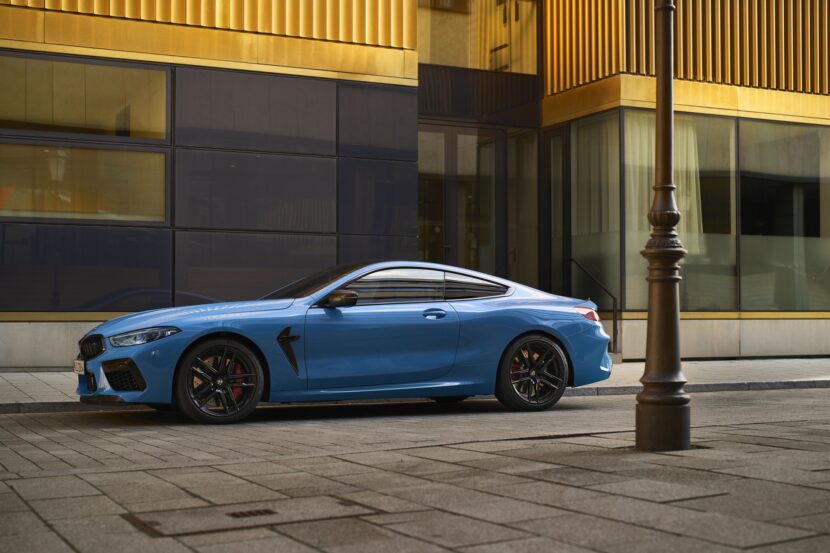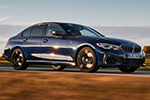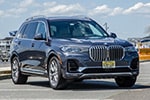The BMW M8 is an interesting car for the brand. It’s one that BMW fans had been asking for since the E31 8 Series debuted in the early ’90s. However, once it finally went into production, with the second-generation 8 Series, fans were left a bit disappointed, as it wasn’t exactly the car they were hoping for. So let’s take a look at one of the more interesting cars in modern BMW history, how it came to be, and what makes it both good and bad.
Brief history of BMW M8
BMW launched the first-gen “E31” 8 Series in 1990 and it was a stunning car. Its wedge-like grand touring looks perfectly encapsulated the era but were timeless enough that the O.G. 8er still looks great today. However, BMW never made a proper M version. I remember an old Motor Trend article, in which journalists asked BMW M engineers why there would be no M8. They were told that an M8 would be too heavy to be a proper M car. The irony is, 30 years later, BMW M now has several 2.5-ton SUVs and one that crests three tons.
Little did anyone know back in the ’90s, though, that BMW did actually build an M8 prototype. It was a completely stripped out, V12-powered, manual transmission, rear-wheel drive monster, with a roll cage, racing bucket seats, and carbon fiber body work. I’ve actually sat in the prototype and it’s unbelievably cool. From what I’ve been told, it’s also a blast to drive. However, it never saw the light of day, as it was far too expensive to make and BMW didn’t think it would sell well at the time. It likely had cold feet from the sales dud that was the BMW M1.
So the BMW M8 prototype was locked in a garage for nearly 30 years, completely hidden from the public, until the actual BMW M8 debuted with the second-gen 8 Series. When the actual production version launched, it couldn’t have been more different from the original. This time, instead of being some stripped-out monster, it was a big, comfy GT car.
BMW M8 as a High-Performance Grand Tourer
The BMW M8 is a high-performance GT, regardless of whatever BMW’s marketing department says. While the M8 has more than enough performance to earn its M badge, it’s also luxurious, comfortable, and quiet. Its leather thrones are comfy, there’s contrast stitching everywhere, and there’s little wind and road noise in the cabin, even at speed. It isn’t quite as luxurious as other big power coupes in its price range but it’s far more lavish than you’d expect from an M Division product. So BMW might say it’s a sports car but it’s more like a budget Bentley Continental GT than it is a Porsche 911-fighter.
Performance and Engine
Rather than a naturally aspirated V12 like the original M8 prototype, the actual production M8 uses a 4.4-liter twin-turbo V8 that makes 617 horsepower and 553 lb-ft of torque. That helps it rocket to 60 mph in under three seconds, which makes it among the fastest vehicles BMW has ever made. That engine is paired with an eight-speed automatic gearbox and all-wheel drive, which makes its performance easy and repeatable. Its top speed is limited to 155 mph but an M Driver’s package raises that top speed limiter to 189 mph.
Design and Styling
As critical as brand purists have been of the BMW M8’s looks have never been in question. It’s a gorgeous looking car, regardless of body style. The BMW M8 was offered in three different body styles: coupe, convertible, and Gran Coupe. The latter of which is a sleek four-door model that’s been the fan favorite since it debuted. However, there isn’t a bad looking car in the lineup. The coupe admittedly, gives off some Mustang vibes but that’s not an insult. Its muscular, low, and lean design makes the M8 a stunner in all shapes and sizes.
Inside, it’s hard to complain about a car that features absurdly impessive build quality and miles of leather but, at its price point, the BMW M8 always felt a bit lacking. There’s nothing technically wrong with it, as it’s comfortable, made well, and packed with great tech. However, the design is quite bland and it just never felt quite special enough to justify its price tag. Sit inside of a Mercedes-AMG SL-Class for similar money and you’ll understand what I’m talking about. And in a car that’s around $140,000, it needs to feel special inside.
Technology and Features
Like all modern BMWs, the BMW M8 has great technology. At this point, it’s still rocking iDrive 7, while most of BMW’s lineup has been upgraded iDrive 8, but it’s still excellent. While it was new, iDrive 7 was typically considered among the best—if not the very best—system on the market. So it still isn’t bad and, in many ways, some BMW fans actually prefer it to the new system.
Because it still uses iDrive 7, the BMW M8 still has physical climate controls, something all BMW fans miss in more modern Bimmers. It also still keeps the old rotary dial, which some newer BMWs are ditching.
Advanced Safety and Driver Assist Features
The BMW M8 has the same safety features as most normal BMWs. It’s not quite as advanced as BMW’s newer cars, such as the iX and 7 Series. So it has such safety features as lane departure warning, blind-spot monitoring, front collision warning with Automatic City Collision Mitigation and Braking, and Level 2 autonomous driver aids. Essentially, the M8 can brake by itself if it detects a potential crash ahead, it can make sure it doesn’t drift into other lanes, monitor its blind spots, and even accelerate, brake, and steer itself on its own while driving on the highway, for short periods of time.
Competition and Advantages/Disadvantages
Being a fast, expensive GT car, the BMW M8 competes with cars like the Mercedes-AMG SL63, Maserati GranTurismo, and the Lexus LC500. The same goes for the M8 Convertible. However, the BMW M8 Gran Coupe gets a slightly different competition. The Mercedes-AMG GT 4-Door Coupe and, if you stretch the price and powertrain a bit, the Bentley Flying Spur hybrid.
In terms of its advantages and disadvantages over its competition, the BMW M8 is typically good performance value for money. It’s cheaper than almost all of its natural competition, such as the SL63, GranTurismo, and Flying Spur, while being every bit as fast as, if not significantly faster than, all of them. The M8 has genuine supercar performance that bests most cars it competes with. If you want to get better straight-line performance, you need to spend quite a bit more money. The M8 also absolutely dominates the LC500, in terms of performance.
However, as far as disadvantages go, the BMW M8 is a bit less luxurious than some competitors, such as the Flying Spur and AMG SL63. It also isn’t quite as sharp as cars like the SL63 or GranTurismo. The LC500 also has quite a bit more character, thanks to its gorgeous design and absolutely spine-tingling V8, while coming in at a much lower price point.
Conclusion
The BMW M8 is a good car, saying otherwise is silly. Especially when you look at it in isolation, without price and competition weighing it down. It’s monstrously fast, great to look at, and nice to live with. However, when you look at it amongst its competition, especially for the money, it starts to look a bit out of place.
If you’re going to spend $140,000 or more on a two-door performance car, there are better options, regardless of your style. If you want a sportier car, there’s the Porsche 911, Aston Martin Vantage, Audi R8, Maserati GranTurismo, you name it. If you want something more premium, the Mercedes-AMG SL63 and Lexus LC500 have you covered.
Which is why the M8 never really sold in the way BMW had obviously hoped. It’s more expensive than its level of luxury would suggest and it lacks the sportiness of less expensive cars. So it’s sort of a ‘tweener that never quite lives up to either its spec sheet or its price tag. Which is why there aren’t plans for a successor once it’s gone.
BMW M8 FAQ
No. The production series BMW M8 is powered by a 4.4 liter V8 TwinTurbo. There was one M8 Concept car which was powered by a V12 engine, but it never made it into production.
It depends how you classify the term supercar. Performance wise? Sure, the BMW M8 can keep up with cars from Ferrari, Lamborghini and other brands. But when it comes to looks, supercars are usually considered more exotic, with a unique design. Of course, BMW had a supercar in the past – the M1.
In some tests, the BMW M8 Competition recorded a 0-60 mph times of around 3.0 seconds.












































































